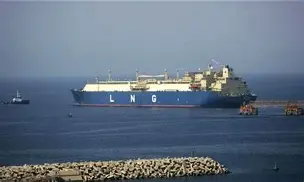The research study by the Competition Commission of Pakistan (CCP) has highlighted that the state owned entities (SOEs) have monopolistic dominance in imports, storage, and distribution of liquefied natural gas (LNG), while the stringent licensing and tariff regulations restricts private sector participation in this sector.
The research study titled “State of Competition in the LNG Sector in Pakistan”, has examined the structural, regulatory, and behavioural barriers to competition in the country’s LNG market.
The study was commissioned by the Finance Division and conducted by CCP’s Research Department.
The report assesses the impact of SOEs such as Pakistan State Oil (PSO), Pakistan LNG ltd (PLL), the SSGCL, and the SNGPL on market dynamics, access, and efficiency in the LNG value chain.
The CCP’s research identifies critical challenges affecting the LNG market such as infrastructure access limitations and slow implementation of Third-Party Access (TPA) rules.
The circular debt accumulation of Rs 2.86 trillion up to January 2024, largely due to delayed tariff adjustments and RLNG diversion.
The report has also suggested strategic recommendations for reform in line with international best practices and guided by the World Bank’s Markets and Competition Policy Assessment Toolkit (MCPAT).
These reforms includes establishing a ‘One-Stop-Shop’ for LNG import clearance through a Central Coordination Committee (CCC), fast-tracking the implementation of TPA rules for LNG terminals and pipelines.
The CCP has also suggested unbundling the Sui companies’ transmission and distribution operations to level the playing field, apart from improving demand forecasting and reducing Unaccounted-for-Gas (UFG) losses through targeted three-year plans.
Speaking on the launch of the report, Chairman CCP, Dr. Kabir Ahmed Sidhu, noted,
“This research aims to catalyse policy discussions and support reforms that foster open access, enhance private sector participation, and ensure sustainable energy security. Competition is central to unlocking efficiency and innovation in Pakistan’s LNG market.”
The study further draws lessons from global jurisdictions, notably Japan, highlighting the importance of gradual liberalisation, unbundling infrastructure ownership, and ensuring fair access.
To foster competition in Pakistan’s LNG and gas market, the unbundling of Sui Northern Gas Pipelines Limited (SNGPL) and Sui Southern Gas Company (SSGC) is a crucial step.
This can be achieved in a phased manner, as follows:
Phase 1: Unbundling of Transmission and Distribution Functions As a starting point, the government can initiate the separation of the transmission and distribution functions within the Sui companies. This will involve creating independent entities for gas transmission (pipeline management) and gas distribution (to end consumers). Unbundling at this level will allow for more transparency, competition, and efficiency in gas distribution, while ensuring a clear delineation of roles between entities managing pipeline infrastructure and those responsible for delivering gas to consumers.
Phase 2: Moving Towards Full Separation of Pipeline Operations Once the transmission and distribution functions are unbundled and established, the next phase should be the complete separation of pipeline operations from the gas supply business.
This approach, modeled after Japan’s system, ensures that pipeline operators are independent entities providing equal access to all market participants.
Independent pipeline operators would guarantee third-party access to infrastructure, leveling the playing field for new entrants and stimulating further investment in the gas sector.
This phased unbundling will align with international best practices and address existing concerns around market entry barriers, eventually leading to a more competitive and liberalized gas market in Pakistan. Under the guidance of OGRA and in coordination with relevant stakeholders, this approach can be implemented gradually to ensure minimal disruption and maximum efficiency in the transition.










